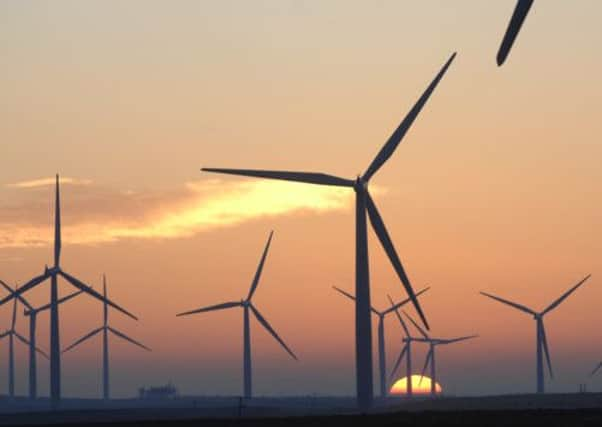Fracking is more efficient than wind farms


The claims that fracking causes earthquakes, wholesale pollution of watercourses and inflammable tap water are easily dismissed by impartial examination of actual experience. The technique has been in use for decades in the United States, and to a lesser extent in the UK. None of these things have happened. Activists have simply alighted on an unfamiliar technology and are intent on demonising it. If this is allowed to happen, the economy will suffer and we will all be the losers.
It is certainly true that the drilling and then injection of the water and sand mixture needed to release the gas can be disruptive for people living nearby. However, shale gas opponents assume wind energy is benign. It is not. Building a wind power complex involves disturbance on a scale at least comparable to that of drilling and hydraulic injection. And while operational wind turbines are huge and noisy, once drilling and injection are finished, shale gas wellheads are silent and unobtrusive.
Advertisement
Hide AdAdvertisement
Hide AdA 12-turbine wind power development can require up to 18,000 HGV movements to bring material for construction of turbine bases and the roadways required to support vehicles carrying heavy blades, turbines and tower sections. The phase of construction with heaviest traffic will typically last for about three months, with nearly 250 vehicles per day. For people living on the vehicle route, this translates to one HGV past their home every two minutes of a working day.
Since large turbines must be spaced at least 500 metres apart, such a development would occupy three or four square kilometres or 300-400 hectares, about the area of 500 football pitches. A gas drilling pad for up to a dozen wells would require only around 2.5 hectares. Furthermore, a gas well can deliver energy whenever required, not just when the wind is blowing. Over its effective lifetime, which I would argue is more like 15 years than the 20-25 years claimed by developers, a 2.5MW turbine would generate around 66,000 megawatt hours of electricity.
The production from a gas well is very variable, but a conservative estimate is 1.5 billion cubic feet of gas. This is equivalent to 450,000MWh, or four times the lifetime output of a wind turbine.
A pad with a dozen wells would thus produce as much energy as 48 wind turbines in a large wind “farm” occupying up to 1,600 hectares, six times the area of Holyrood Park and Arthur’s Seat. The drilling derrick is quite a large piece of equipment, 30-40m high, about the size of a large electricity pylon. However, this is less than a third the height of a 130-metre turbine and there is only one of it. Moreover, it will be there only for the 30-60 days or so required for drilling and will then be removed. The number of heavy vehicle movements during injection and fracturing is typically 1,000 per well. Compare this with nearly 2,000 for each wind turbine, which would produce a quarter of the amount of energy. When drilling and injection are finished, all that will remain at the drilling pad will be valves, pipework and storage tanks.
During the production phase, the contrast between shale gas and wind becomes most striking; 400ft turbines cannot be concealed in the landscape. Their continual motion draws attention to them. Close to homes, they are dominating and overbearing. The gas production site need have nothing higher than a single storey building and can easily be concealed by tree plantings.
Wind turbines are allowed to make more noise than any other industrial activity – it is persistent, obviously unnatural, hardly attenuated by walls and often worst at the quietest times of the day or night. By contrast, a person standing near a wellhead at a particularly quiet time will hear only a gentle “whooshing” sound.
Time then, for our governments to rethink their insane policy of erecting yet more unreliable, expensive and intrusive wind turbines when a safe, proven, reliable alternative lies under their feet.
• Dr Jack Ponton is a member of the Scientific Alliance Scotland: www.scientific-alliance.org The Fracking Question, a Scotsman Conferences’ event, will be held on 11 December. See www.scotsmanconferences.com
SEE ALSO